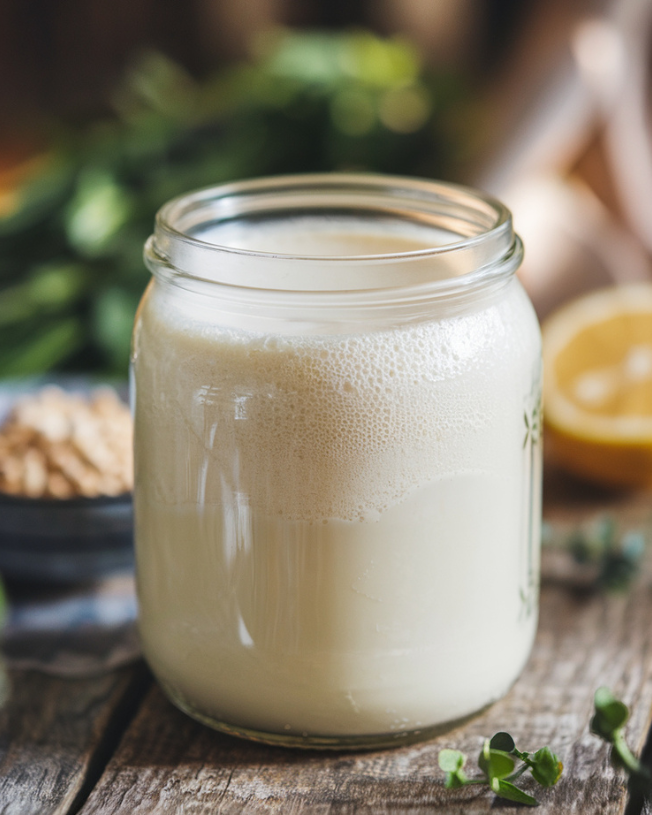Yogurt cheese, also known as labneh or strained yogurt, is a creamy, tangy spreadable cheese created by draining whey from yogurt. This versatile ingredient has been cherished in Middle Eastern and Mediterranean cuisines for centuries. With its smooth texture and probiotic benefits, this cheese offers a nutritious alternative to cream cheese or other spreads, perfect for a range of savory and sweet recipes. In this article, we’ll explore everything you need to know about yogurt cheese: what it is, how to make it, its health benefits, and ways to enjoy it in your meals.
What is Yogurt Cheese?
This cheese is simply yogurt that’s been strained to remove its liquid content, or whey, leaving behind a thicker, richer consistency. Unlike traditional cheese, it doesn’t require aging or special ingredients – it’s all about the simplicity of straining. This process results in a spread that retains the probiotic benefits of yogurt but with a texture similar to cream cheese. It’s typically made from full-fat or Greek yogurt, though you can also use low-fat yogurt for a lighter version.
Why Make Yogurt Cheese?
This creamy spread has gained popularity for many reasons beyond its smooth and tangy flavor. Let’s explore some of the main reasons why it might become a new staple in your kitchen:
Easy to Make at Home: Making this cheese is incredibly simple, requiring minimal equipment and only a bit of patience as it strains. All you need is yogurt, a strainer, and a little time.
Rich in Probiotics: Made from live-cultured yogurt, it retains probiotics—beneficial bacteria that support gut health. These probiotics aid digestion, enhance nutrient absorption, and support immune health.
Lower in Calories and Fat: Compared to many other cheeses, this spread can be lower in calories and fat, especially if you make it from low-fat or Greek yogurt. This makes it an excellent option for those watching their calorie intake.
Versatile Ingredient: It has a neutral, tangy flavor that pairs well with both savory and sweet ingredients. You can use it as a spread, a dip, a topping, or even as a base for desserts.
High in Protein: Greek yogurt-based versions are particularly high in protein, making it a great option for those seeking a protein-packed snack.
How to Make Yogurt Cheese at Home
Making this at home is easy, and you don’t need any special skills or ingredients beyond yogurt and a few basic kitchen tools. Here’s a step-by-step guide to get you started.
What You’ll Need:
- Plain Yogurt: Use full-fat, Greek, or low-fat yogurt based on your preference. Greek yogurt will yield a thicker cheese, while regular yogurt produces a softer, creamier consistency.
- Cheesecloth or Clean Kitchen Towel: Ideal for straining, though a clean, lint-free kitchen towel can work too.
- Fine-Mesh Strainer: This helps keep the yogurt in while allowing the whey to drip out.
- Bowl: Used to collect the whey as it drains.
Step-by-Step Instructions:
Set Up the Strainer: Place the fine-mesh strainer over a large bowl. Line it with a double layer of cheesecloth or a clean kitchen towel.
Add the Yogurt: Pour the yogurt into the cheesecloth-lined strainer. For a thicker result, use Greek yogurt. Regular yogurt will still work but will take a little longer to strain to the desired thickness.
Wrap and Secure: Fold the cheesecloth over to cover it. You can place a small weight on top to speed up the process, but be careful not to press too hard, as this can squeeze out some of the creamy texture.
Let it Strain: Place the entire setup (strainer, yogurt, and bowl) in the fridge and let it strain for at least 6-12 hours. The longer it strains, the thicker it will become. For a thick, spreadable result, let it strain for 24 hours.
Transfer and Store: Once it reaches your desired consistency, transfer to an airtight container. It can stay fresh in the refrigerator for up to two weeks.
Tips for the Best Yogurt Cheese
Experiment with Different Yogurts: While plain yogurt is standard, feel free to experiment with Greek yogurt for extra thickness or flavored varieties for a sweeter version.
Season to Taste: This spread is incredibly versatile, so feel free to add a pinch of salt, herbs, or spices for added flavor. Popular additions include garlic, dill, chives, or even a drizzle of olive oil.
Save the Whey: Don’t discard the whey! It’s packed with nutrients and can be used in smoothies, soups, or as a substitute for water in baking.
For Extra Thickness, Strain Longer: The consistency is easily customizable. If you prefer a thicker, firmer texture, strain it for a full 24 hours.
Delicious Ways to Use Yogurt Cheese
One of the best things about this cheese is its versatility. Here are some delicious ways to incorporate it into your meals:
Spread for Toast or Bagels: Use it as a healthy alternative to cream cheese. It’s delicious on toast, bagels, or crackers, especially when topped with herbs.
Savory Dip: Mix in garlic, salt, and your favorite herbs to create a creamy, tangy dip perfect for vegetables, pita chips, or tortilla chips.
Topping for Soups and Stews: Add a dollop on top of soups, stews, or baked potatoes for a touch of creaminess and tang.
Sweetened Spread for Desserts: Blend with a bit of honey, vanilla, or fruit puree to create a mildly sweet topping for cakes, muffins, or pancakes.
Base for Dressings and Sauces: It can serve as the base for creamy dressings and sauces. Mix with lemon juice, garlic, and olive oil for a salad dressing, or stir into pasta for a creamy sauce.
Frequently Asked Questions
Can I Use Non-Dairy Yogurt?
Yes, you can! Non-dairy options, such as almond or coconut yogurt, can also be strained to make a vegan version. However, the texture may vary, so you may need to experiment to achieve the consistency you like.
How Long Does It Last?
Typically, it lasts about two weeks in the refrigerator. Make sure to store in an airtight container to keep it fresh and to avoid absorbing any unwanted flavors from the fridge.
Is It the Same as Greek Yogurt?
Not exactly. Greek yogurt is strained, but not to the same extent. Yogurt cheese is thicker and closer to the consistency of cream cheese, whereas Greek yogurt remains spoonable.
Why Yogurt Cheese is a Great Addition to a Healthy Diet
Incorporating this creamy spread into your diet can provide a protein boost, probiotics, and a low-fat alternative to many spreads. Its simplicity makes it an attractive option for those who enjoy homemade foods with health benefits, and its versatility means you’ll never run out of ways to enjoy it. Whether you’re following a low-carb diet, looking for more protein, or simply interested in trying new flavors, this spread can be a welcome addition to your kitchen.
So, if you haven’t tried yogurt cheese yet, grab some yogurt and start straining! With just a few hours and a little patience, you’ll have a fresh, creamy cheese that’s perfect for spreading, dipping, and topping all your favorite foods.
Enjoy exploring the delicious world of this spread, and don’t forget to experiment with flavors to make it your own!





